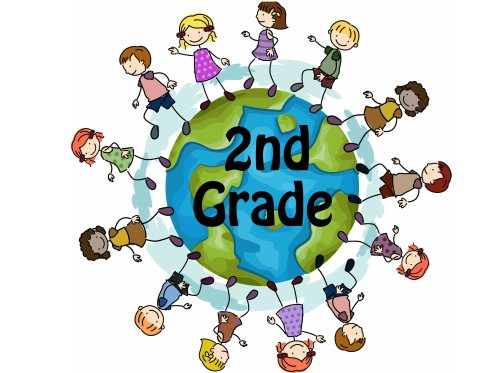- Hamilton Elementary School
- 2nd Grade Curriculum
Lile, Carolyn - 2nd Grade Teacher
Page Navigation

-
By the end of 2nd grade, students will be able to:
ELA (English Language Arts)
Objectives:
- Apply systematic phonics instruction
- Learn to connect what they know from their own experiences to texts before, during and after a read-aloud.
- Retell stories, using characters and plot to organize their thinking
- Visualize to make sense of figurative language; deepen their understanding and enjoyment of poems and stories
- Wonder and ask questions before, during, and after a read-aloudto make sense of both fiction and nonfiction texts
- Identify features of expository texts and use those features to help them understand the texts
- Make inferences to think more deeply about the fiction and nonfiction texts.
- Explore which ideas in texts are important and support their thinking with evidence from the texts
- Use story elements to help them think about stories
- Describe the setting, problems, solutions, sequence of events, and moral lesson in fiction texts
- Describe main characters in fiction including their traits, motivations, and feelings
- Identify important ideas and use then to summarize
- Use the writing process to publish original works
- Learn about conventions from published works.
- Read and share published pieces with the class
- Learn about elements of craft and/or genre from published works.
Math
Objectives:
- Addition and subtraction fluency within 20
- Subtract within 100 using strategies
- Numbers to 1000
- Subtraction to Length
- Work with Equal Groups
- Fluently Subtract within 100
- Add within 1000 using Models and Strategies
- Graphs and Data
- Add within 100 using Strategies
- Solving Problems using Addition and Subtraction
- Subtract within 1000 using Models and Strategies
- Shapes and their Attributes
- Fluently Add within 100
- Work with Time and Money
- Measure and Estimate Lengths in Standard Units
Science
Objectives:
- Investigate different materials to describe their observable properties
- Collect data from an investigation to determine which materials have properties that are best for an intended purpose
- Investigate how the motion of an object can change by an applied force or mass
- Investigate how vibrations can be changed to create different sounds
- Collect evidence from an investigation to describe the optimal growing conditions for plants
- Develop a model to describe the function of animals in seed dispersal and pollination
- Make observations and interpret data to support examples of how the earth has changed
- Compare multiple explanations to slow wind or water from changing the shape of the land
- Use a model to describe the different shapes or kinds of lands and bodies of water in an area
- Obtain information from various sources to identify where water is found on Earth and that it can be solid or liquid
- Communicate information or design ideas and/or solutions about a situation people want to change
- Develop a model to describe how the shape of an object helps it function to solve a given problem
- Make and record observations to compare the strengths and weaknesses of how two objects perform
Social Studies
Objectives:
Engage in the study of geography as it relates to the cultural, economic, and political characteristics of the regions of both Missouri and the United States. This approach supports in-depth inquiry through the examination and evaluation of multiple sources and allows students to explore various regions through the disciplines of history, civics, and economics.
Students will study:
- Responsible Citizenship and Government Leaders
- Inventions that Changed the Way People Lived
- Native American Tribes of Missouri
- Economic Concepts of Our Community

